Abstract
1 Recent evidence for the existence of extrarenal tissue renin-angiotensin systems has raised the question of whether such a system also exists in the heart.
2 Evidence is presented for a cardiac renin-angiotensin system based on molecular biological and biochemical data. In addition, the question of whether the components of this system interact as a locally integrated, biologically functioning unit is addressed.
3 Using radio-labelled cRNA probes prepared from specific cDNA fragments, renin and angiotensin gene expression in atria and ventricles of the rat heart have been documented by Northern blot and liquid hybridization analysis. Relative signal strength for both mRNAs was highest in the atria, followed by the right and left ventricle.
4 Using specific, h.p.l.c.-controlled RIAs for angiotensin peptides, the presence of both angiotensin I and angiotensin II in all anatomical regions of the monkey and rat heart have been demonstrated; similarly, presence of converting enzyme activity was also ascertained by direct in vitro determinations.
5 Additional experiments evaluating the spontaneous release of angiotensin from rat isolated, perfused hearts revealed a bimodal pattern of high, but rapidly declining rates during the first hour (perhaps representing washout of a pool sequestrated from plasma), followed by a prolonged period of steady, low level release, consistent with the secretion of locally synthesized protein.
6 In separate experiments aimed at examining the possible local integration of the components of the cardiac renin-angiotensin system, angiotensin II concentrations were measured in the coronary sinus effluent of rat isolated, perfused hearts. Infusion of angiotensin I resulted in the prompt appearance of angiotensin II, amounting to a single pass fractional conversion of 6.42 ± 0.33%. Dose-dependent inhibition of this effect by simultaneous infusion of captopril further supports the existence of a specific intracardiac pathway for the activation of angiotensin II.
7 To establish the potential role of endogenous cardiac angiotensinogen as a substrate for locally formed angiotensin, rat isolated, perfused hearts were exposed to infusions of purified renin. Angiotensin I, undetectable prior to renin infusion, was dose-dependently released into the coronary circulation at peak rates ranging from 2.4 ± 0.7 fmol min-1 to 1.4 ± 0.2 pmol min-1, of which 7.2 ± 1.1% was intracardially converted to angiotension II. All renin effects were blocked in the presence of a specific pentapeptide renininhibitor.
Full text
PDF
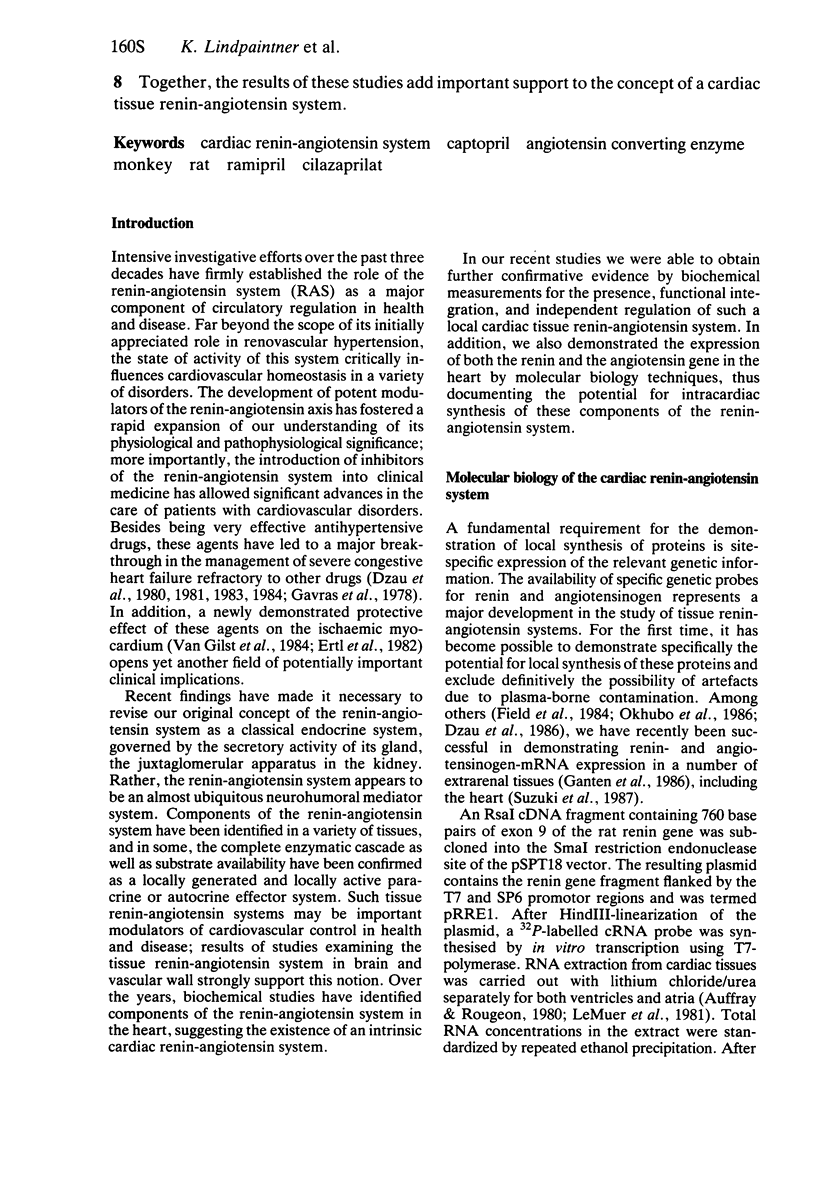
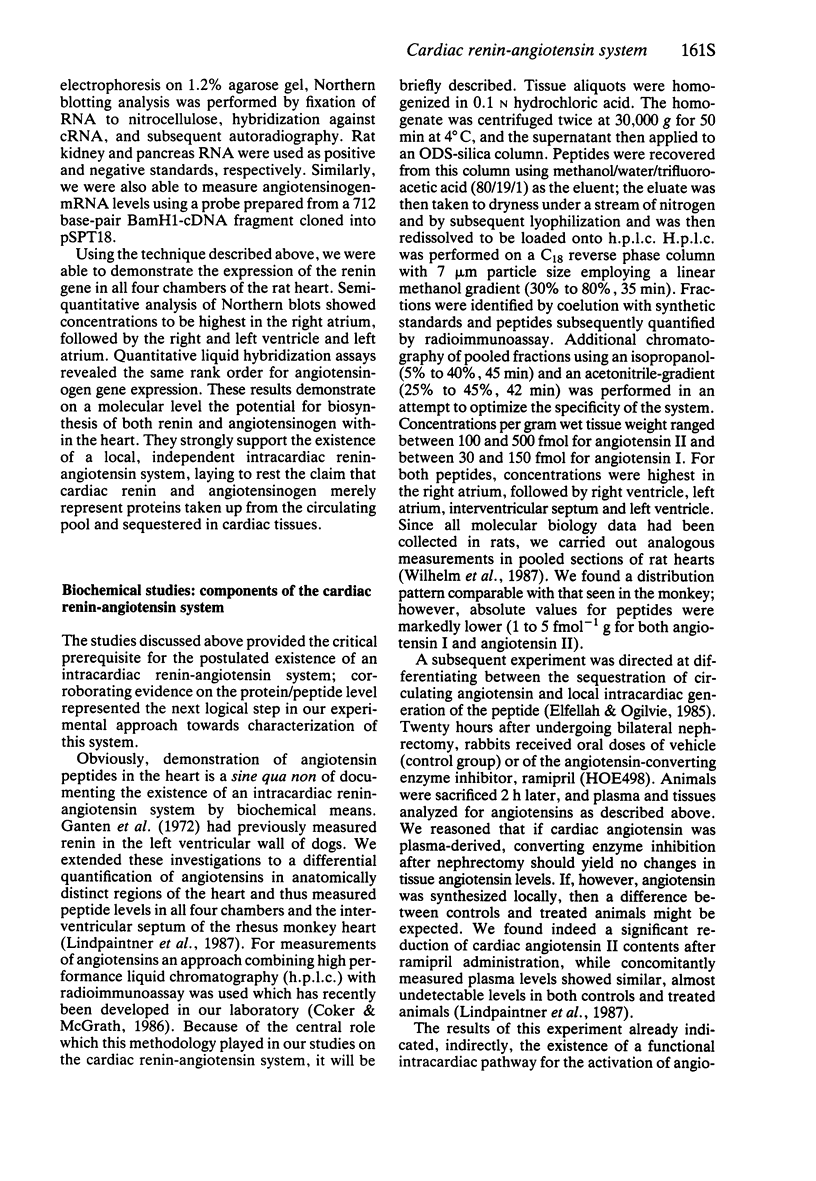
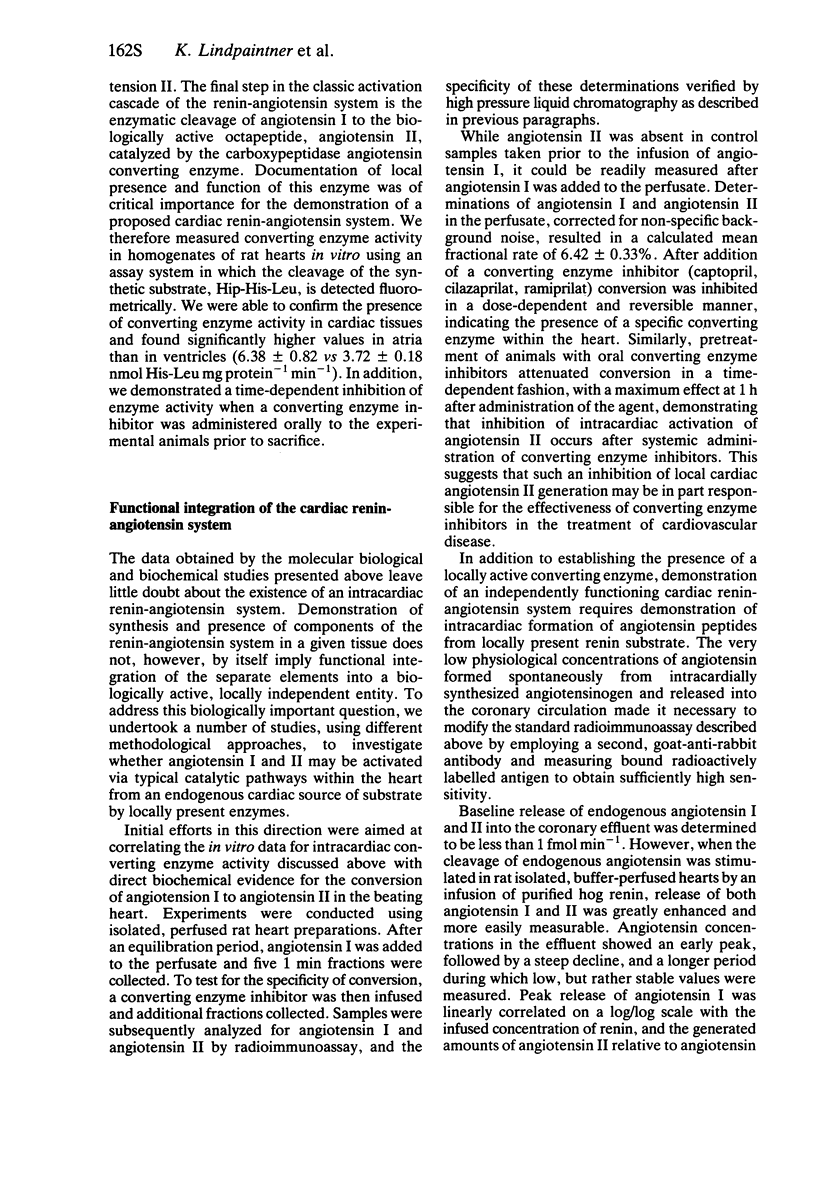
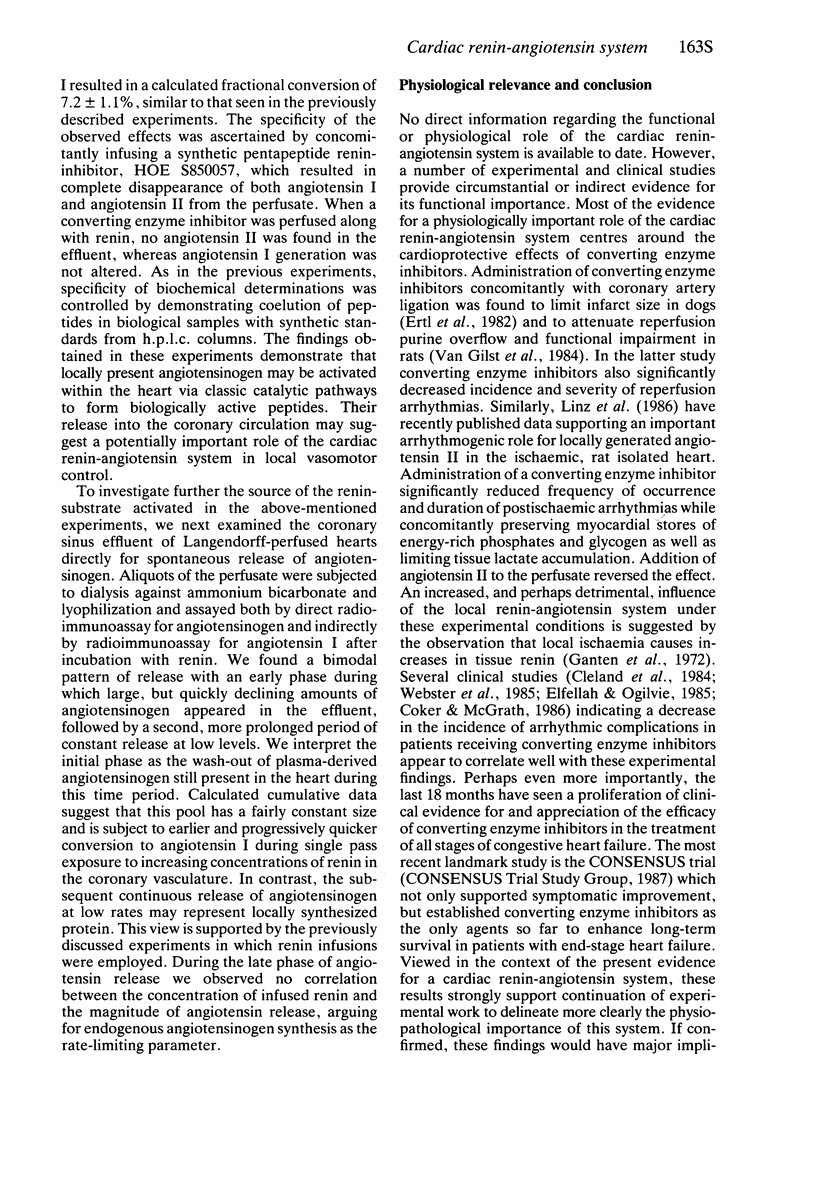
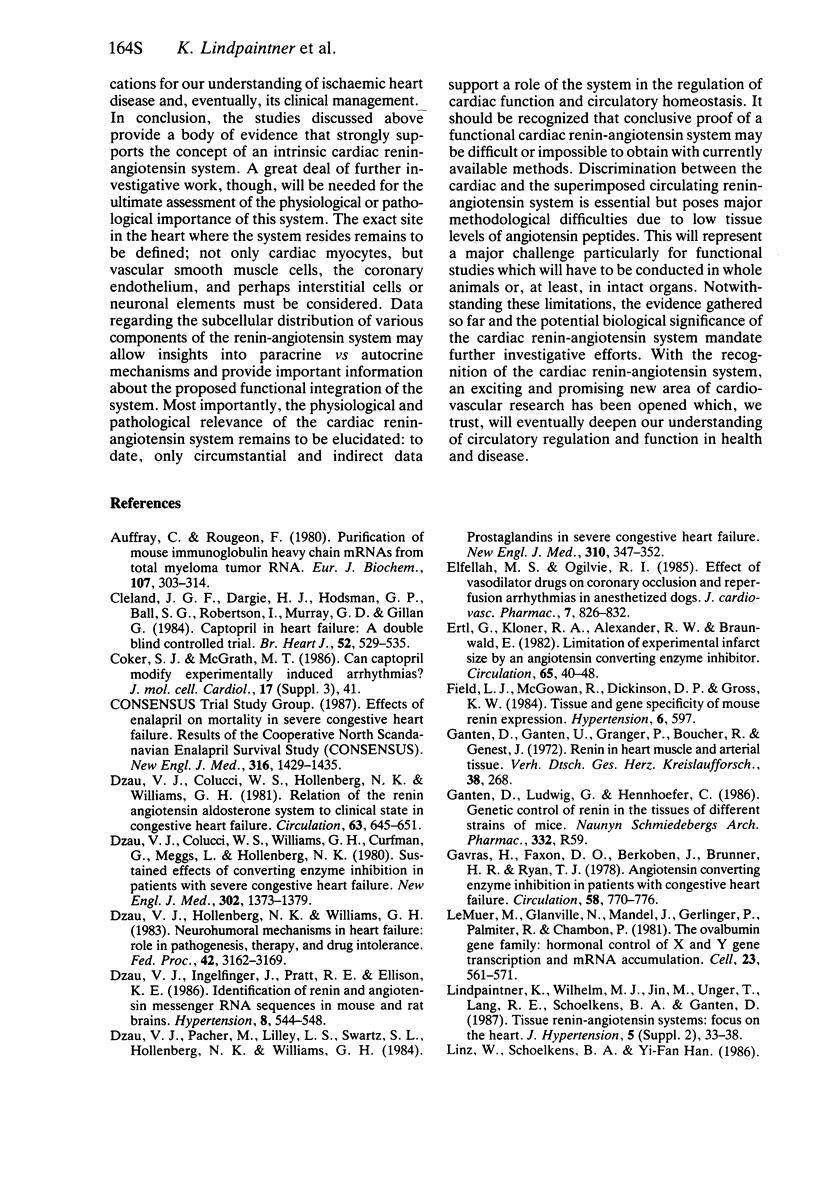
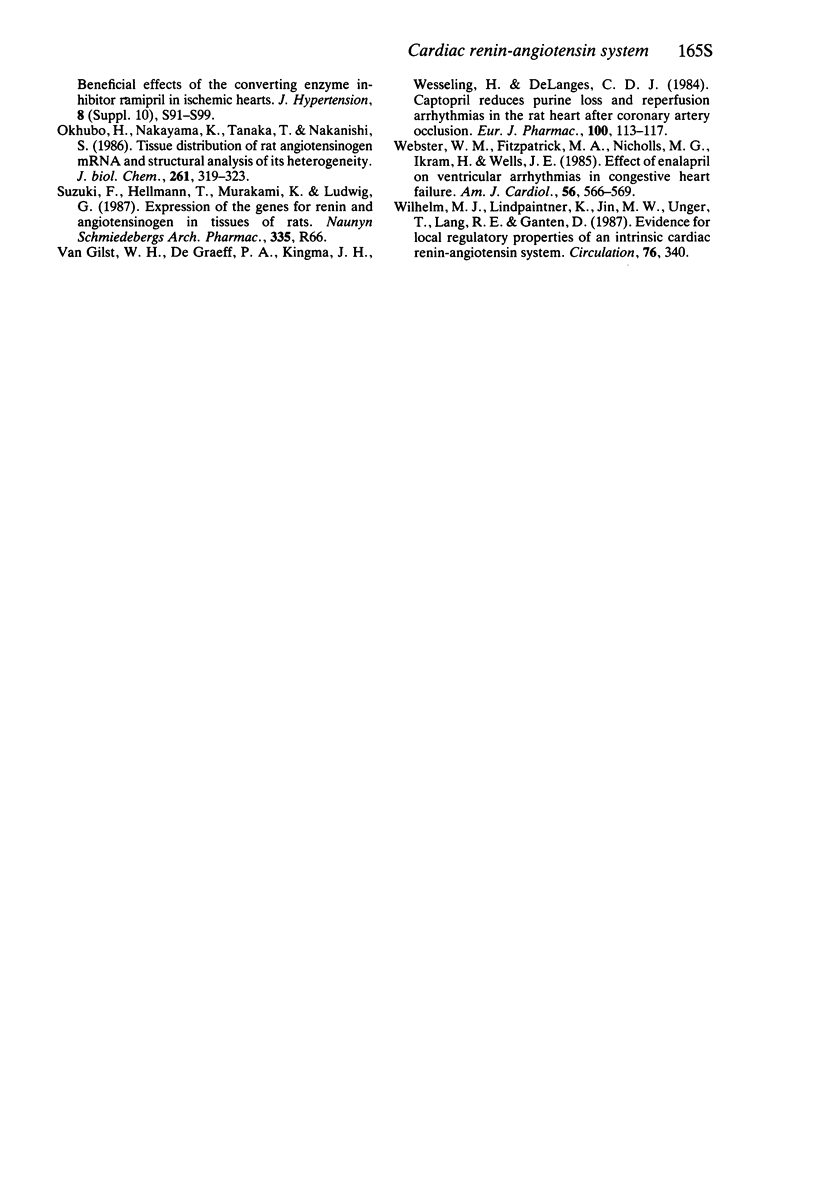
Selected References
These references are in PubMed. This may not be the complete list of references from this article.
- Auffray C., Rougeon F. Purification of mouse immunoglobulin heavy-chain messenger RNAs from total myeloma tumor RNA. Eur J Biochem. 1980 Jun;107(2):303–314. doi: 10.1111/j.1432-1033.1980.tb06030.x. [DOI] [PubMed] [Google Scholar]
- Cleland J. G., Dargie H. J., Hodsman G. P., Ball S. G., Robertson J. I., Morton J. J., East B. W., Robertson I., Murray G. D., Gillen G. Captopril in heart failure. A double blind controlled trial. Br Heart J. 1984 Nov;52(5):530–535. doi: 10.1136/hrt.52.5.530. [DOI] [PMC free article] [PubMed] [Google Scholar]
- Dzau V. J., Colucci W. S., Hollenberg N. K., Williams G. H. Relation of the renin-angiotensin-aldosterone system to clinical state in congestive heart failure. Circulation. 1981 Mar;63(3):645–651. doi: 10.1161/01.cir.63.3.645. [DOI] [PubMed] [Google Scholar]
- Dzau V. J., Colucci W. S., Williams G. H., Curfman G., Meggs L., Hollenberg N. K. Sustained effectiveness of converting-enzyme inhibition in patients with severe congestive heart failure. N Engl J Med. 1980 Jun 19;302(25):1373–1379. doi: 10.1056/NEJM198006193022501. [DOI] [PubMed] [Google Scholar]
- Dzau V. J., Hollenberg N. K., Williams G. H. Neurohumoral mechanisms in heart failure: role in pathogenesis, therapy, and drug tolerance. Fed Proc. 1983 Dec;42(15):3162–3169. [PubMed] [Google Scholar]
- Dzau V. J., Ingelfinger J., Pratt R. E., Ellison K. E. Identification of renin and angiotensinogen messenger RNA sequences in mouse and rat brains. Hypertension. 1986 Jun;8(6):544–548. doi: 10.1161/01.hyp.8.6.544. [DOI] [PubMed] [Google Scholar]
- Dzau V. J., Packer M., Lilly L. S., Swartz S. L., Hollenberg N. K., Williams G. H. Prostaglandins in severe congestive heart failure. Relation to activation of the renin--angiotensin system and hyponatremia. N Engl J Med. 1984 Feb 9;310(6):347–352. doi: 10.1056/NEJM198402093100603. [DOI] [PubMed] [Google Scholar]
- Elfellah M. S., Ogilvie R. I. Effect of vasodilator drugs on coronary occlusion and reperfusion arrhythmias in anesthetized dogs. J Cardiovasc Pharmacol. 1985 Sep-Oct;7(5):826–832. doi: 10.1097/00005344-198509000-00003. [DOI] [PubMed] [Google Scholar]
- Ertl G., Kloner R. A., Alexander R. W., Braunwald E. Limitation of experimental infarct size by an angiotensin-converting enzyme inhibitor. Circulation. 1982 Jan;65(1):40–48. doi: 10.1161/01.cir.65.1.40. [DOI] [PubMed] [Google Scholar]
- Field L. J., McGowan R. A., Dickinson D. P., Gross K. W. Tissue and gene specificity of mouse renin expression. Hypertension. 1984 Jul-Aug;6(4):597–603. doi: 10.1161/01.hyp.6.4.597. [DOI] [PubMed] [Google Scholar]
- Ganten D., Ganten U., Granger P., Boucher R., Genest J. Renin in heart muscle and arterial tissue. Verh Dtsch Ges Kreislaufforsch. 1972;38:268–272. doi: 10.1007/978-3-642-72305-6_38. [DOI] [PubMed] [Google Scholar]
- Gavras H., Faxon D. P., Berkoben J., Brunner H. R., Ryan T. J. Angiotensin converting enzyme inhibition in patients with congestive heart failure. Circulation. 1978 Nov;58(5):770–776. doi: 10.1161/01.cir.58.5.770. [DOI] [PubMed] [Google Scholar]
- LeMeur M., Glanville N., Mandel J. L., Gerlinger P., Palmiter R., Chambon P. The ovalbumin gene family: hormonal control of X and Y gene transcription and mRNA accumulation. Cell. 1981 Feb;23(2):561–571. doi: 10.1016/0092-8674(81)90152-5. [DOI] [PubMed] [Google Scholar]
- Ohkubo H., Nakayama K., Tanaka T., Nakanishi S. Tissue distribution of rat angiotensinogen mRNA and structural analysis of its heterogeneity. J Biol Chem. 1986 Jan 5;261(1):319–323. [PubMed] [Google Scholar]
- Van Gilst W. H., De Graeff P. A., Kingma J. H., Wesseling H., De Langen C. D. Captopril reduces purine loss and reperfusion arrhythmias in the rat heart after coronary artery occlusion. Eur J Pharmacol. 1984 Apr 13;100(1):113–117. doi: 10.1016/0014-2999(84)90323-6. [DOI] [PubMed] [Google Scholar]
- Webster M. W., Fitzpatrick M. A., Nicholls M. G., Ikram H., Wells J. E. Effect of enalapril on ventricular arrhythmias in congestive heart failure. Am J Cardiol. 1985 Sep 15;56(8):566–569. doi: 10.1016/0002-9149(85)91186-5. [DOI] [PubMed] [Google Scholar]


